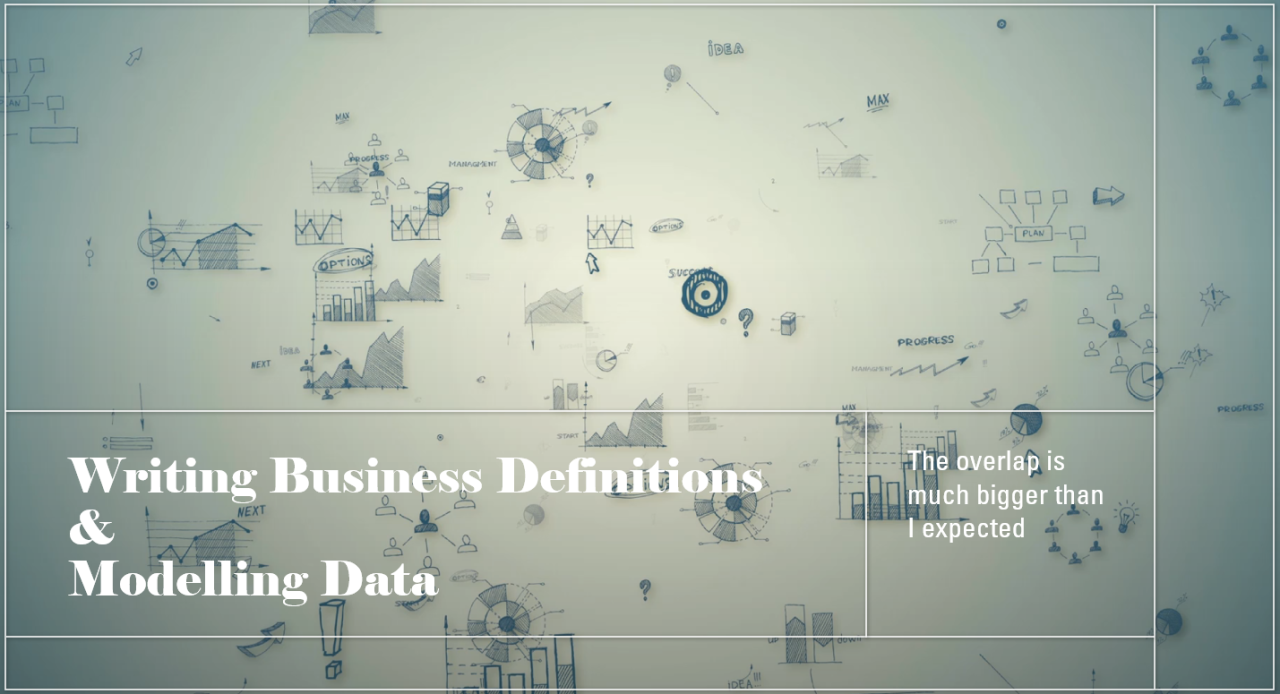Writing Business Definitions and Modelling Data
Date: November 6, 2022
Author: Howard Diesel
In June 2021, we were honoured to have Marco Wobben present his work with CaseTalk in the "INs and OUTs of Data Modelling" Webinar.
Marco helped us understand the FCO-IM approach to Data Modelling. I was very impressed with the approach of getting people to describe their data requirements in terms of the everyday business language they used.
One of my comments on the LinkedIn chat: This is also an excellent technique to build a business Glossary.
In March of this year, I met Mark Atkins and Terry Smith; shortly after that, they presented on one of our webinars about Writing Business Definitions.
We all met to discuss the possible integration of the two approaches. It didn't take long for Marco to build a JSON integration mechanism.
I started the Intralign Education course: Writing Business Definitions, four weeks ago. It didn't take long to recognize the power of the Business Definition Structure developed by Mark & Terry. It took me longer to realize this structure's value in its application to modelling data.
In Week 3, Terry presented a slide describing how to define differentiating characteristics of a Business Term in a structured format written in short phrases - which they call "Business Rules".
The differentiating characteristics/business rules are:
Functional/Consequential Rules
Characteristic (feature, property) Rules
Compositional (composed of) Rules
Conditional (depending on) Rules
Financial (monetary obligations) Rules
Regulatory (regulatory & legal impacts) Rules
Formula (calculation) Rules
Notational (commentary) Rules
The list of business rules made me think: doesn't a data model also describes these business rules?
The next step was finding your six friends (5W1H):
Why do we have it?
Who is involved?
What makes this different from anything else in its class?
When is it used, and when does it occur?
Where will it be used, and where is it located?
How is it used, and how is it calculated?
Precisely how do we map the Business Definition Structure to the Data Model?
This was a very informative and eye-opening webinar series. Engaging and collaborating with the data community is always an honour and educational experience.
Give us a follow on LinkedIn and join the Meetup community to get involved and to not miss out on the new series we get tucked into.
Here is the original article with some comments if you have anything you would like to add: https://www.linkedin.com/pulse/writing-business-definitions-modelling-data-howard-diesel?utm_source=share&utm_medium=member_ios&utm_campaign=share_via
If you would like to join the discussion, please visit our community platform, the Data Professional Expedition.
Additionally, if you would like to be a guest speaker on a future webinar, kindly contact Debbie (social@modelwaresystems.com)
Don’t forget to join our exciting LinkedIn and Meetup data communities not to miss out!

